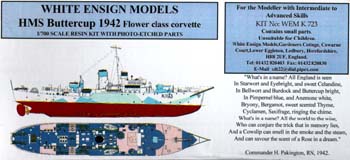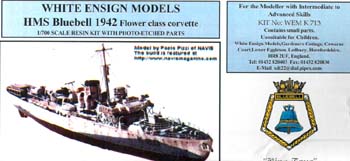History
The only campaign that really had Churchill worried was the battle
of the Atlantic. Many times Britain was on the verge of starvation and
it was only through the efforts of the men on board the multitude of merchant
shipping that sustained the island nation. To ensure the safe and timely
arrival of these ships the Allied navies employed numerous types of escort
vessels, of which none is more famous than the little Flower Class Corvettes.
Based on a pre-war whaler design by Smith's Dock Co, the Flower class
corvette was built to merchant ship standards which meant that yards with
no experience in building warships could turn them out, and turn them
out they did – by wars end 269 had been built in British and Canadian
yards, and a further six that had been laid down in French yards were
completed by the Germans.
The Kit
HMS Buttercup 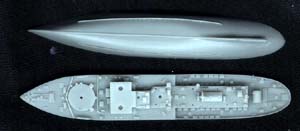 |
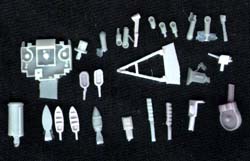 |
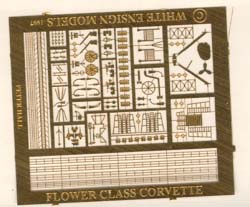 |
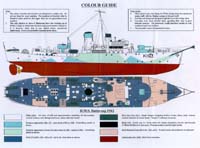 |
HMS Bluebell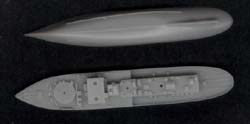 |
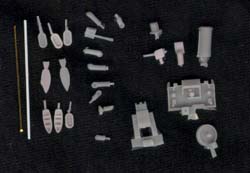 |
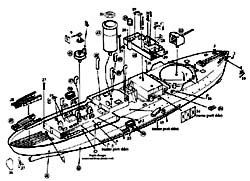 |
White Ensign
Models currently offer two Flower Class Corvettes in 1/700 scale –
HMS Bluebell and HMS Buttercup. Bluebell is a typical corvette with all
the modifications made to the basic design – open bridge, extended
foc's'le, type 271 radar, extra depth charges .. the list goes on. HMS
Buttercup is an intriguing choice though. She was fitted with a large
stern mounted winch for minesweeping, as well as an 'acoustic hammer'
on the bow. The acoustic hammer was a means of detonating acoustic mines
by lowering a bucket on the end of an 'A' frame in front of the bow, and
then dropping a weight into the bucket .. the resulting sound was hoped
to detonate mines in the vicinity.
I was lucky enough to receive both kits for my birthday recently (thanks
guys), and as they are quite similar I shall describe the pair together
and then with any differences.
Both kits come packaged in the familar sturdy cardboard box. The cover
of Bluebell features a built-up model, while Buttercup has a full-colour
illustration showing the camouflage pattern. Opening the boxes reveals
all parts were wrapped in bubblewrap or a small ziplock bag.
Each kit has a two-piece hull allowing either waterline or full hull
display. Both kits had the two halves pre-sanded and test fitting showed
they aligned well with no gaps. However the bottom halves were slightly
oversanded and putty will be required to fair them smoothly into the upper
hull. A close look at the two upper hulls reveals that while basically
similar, they are not interchangable. Buttercup has the foc's'le break
further aft then Bluebell, different stern depth charge arrangement as
well as details on the engine room casing and stowage in front of the
bridge.
The rest of the kits consist of resin and photoetch. The resin parts
are for the open bridge (different designs for each), funnels, 4"
gun, open and closed boats, depth charges, 271 radar, vents, aft bandstand,
'A' frame for Buttercup's acoustic hammer. There is also plastic rod for
extra depth charges and the masts.
The photoetch is what really makes these two come alive. The sheet is
common to both kits, therefore many parts can be held over for future
use. There are the correct two-bar rails and some three bar as well, depth
charge racks, HF/DF, lattice brdge supports, 2pdr, 20mm Oerlikon, semaphore
pole, doors, ladders, minesweeping winch ends, 'A' frame (your choice
of resin or PE), life rings, screw and rudder.
Both kits are well served in the instructions provided.
There is a multi page textual description of the building sequence,
a plan and profile view of each ship as well as an exploded view of all
parts and an illustration of each piece of photoetch. An added bonus is
the large colour illustration of each ship showing the camouflage pattern
worn.
Conclusion
Within a week of receiving these two kits I had built HMS
Buttercup, and that includes a weekend of trying to decide which one
to do first. Although I was supposed to be working on a paying project,
whenever I had a few moments of free time I went over to the bench and
did something new to Buttercup. I have no hesitation in recommending these
two to anyone as a first resin ship model, and for the more experienced
builder they offer much scope for detailing. Now all that is needed is
a 1/700 short foc's'le Flower.
|







